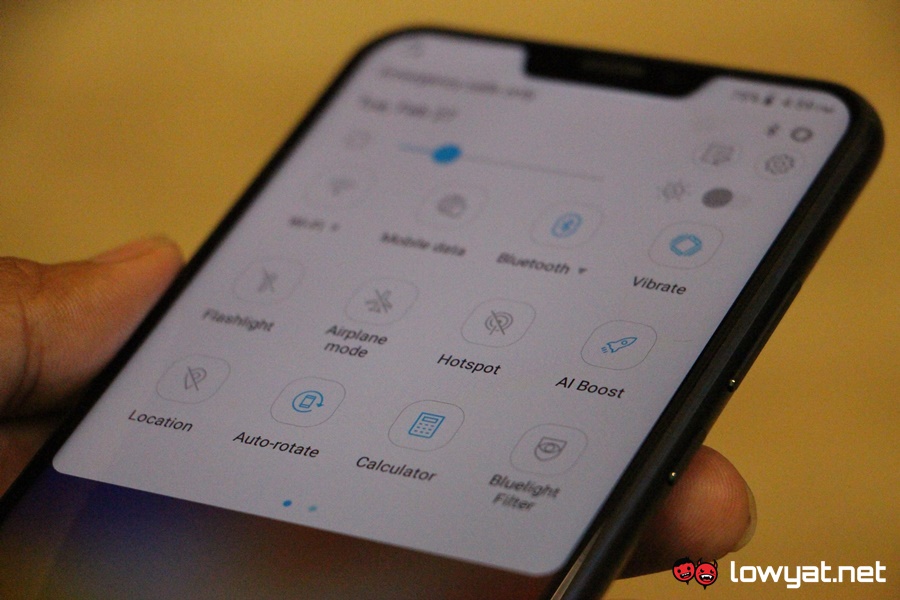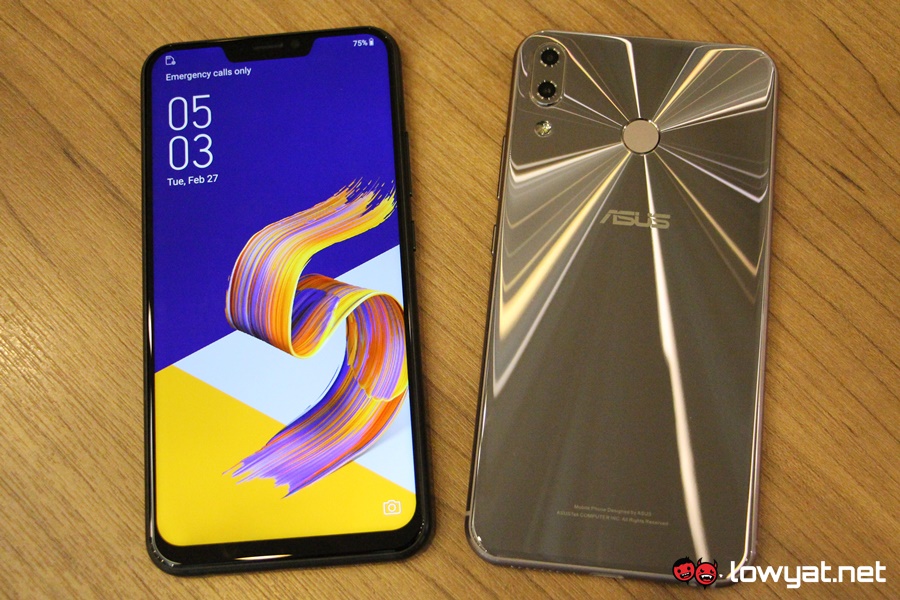ASUS usually doesn’t announce new ZenFone devices during the early part of the year, but somehow the company has decided to change that this year by launching the ZenFone 5 series at Mobile World Congress 2018. Among the new models that were unveiled at the event is the titular ZenFone 5 and the flagship ZenFone 5Z.
At a glance, it is really hard to differentiate the ZenFone 5 and ZenFone 5Z apart because they are essentially identical to each other in terms of design and build. There are indeed several differences though which include their processors as the ZenFone 5 is powered by the mid-ranger Qualcomm Snapdragon 636 while the ZenFone 5Z runs on the higher end Qualcomm Snapdragon 845.
Other than that, the ZenFone 5 can be obtained with up to 6GB RAM and 128GB internal storage as compared to ZenFone 5Z which goes up to 8GB of RAM and 256GB internal storage. Even the storage medium used on both phones are different as ASUS has chose to equip ZenFone 5 with eMCP while opting for UFS 2.1 chip on ZenFone 5Z.
Aside from these major differences, both ZenFone 5 and ZenFone 5Z are equipped with the same 6.2-inch FHD+ (2246 x 1080) 19:9 IPS full screen display. They also come with two rear cameras which include 12MP Sony IMX363 sensor for the primary camera as well as f/1.8 6-elements lens, optical image stabilization for still images and electronic image stabilization for video recording.
The secondary rear camera and front camera on both devices features the same 8MP Omnivision 8856 sensor but they are paired with different set of optics in the form of f/2.2 120-degree 5-element lens and f/2.0 84-degree 4-element lens respectively. Together with fingerprint sensor, ZenFone 5 and ZenFone 5Z also support face unlocking as their main biometric security measures.
Both phones also come with dual speakers as well as support for Hi-Res Audio and DTS Headphone:X 7.1 audio enhancements. Pre-installed with ZenUI 5.0 on top of their Android 8.0 Oreo operating system, rounding up the common specifications of ZenFone 5 and ZenFone 5Z is a 3300mAh battery.
In addition to the all-new design and hardware, ASUS has also brought forward plenty of AI-powered features to both phones. One of them is the AI Scene Detection on their rear cameras which is designed to detect and provide optimum camera settings for 16 different scenes and objects. This particular function takes advantage of the Qualcomm AI Engine for faster processing.
Another interesting AI-powered feature that the company has implemented into ZenFone 5 and ZenFone 5Z is AI Boost which increases the performance of both phones when they run demanding apps. Also designed for multi-tasking, it also keeps a constant look at the phones’ overall conditions in order to make sure that the performance boost is kept within their limits.
There is also the AI Charging feature which would keep track of users charging habit to determine the time it takes to charge both devices while maintaining the health of their batteries. For example, slower charging time might be applied when they charged outside of peak hours while faster charging rate might be activated during the daytime as users tend to utilize these devices more during that period.
Joining the growing crowd of live animated emoji, ASUS has also unveiled its own take on the feature for both devices. Called ZeniMoji, it allows users to craft emoji video based on their facial movements and expressions which can be utilized even for live streaming sessions on Facebook.
In terms of availablity, the ZenFone 5 will be released starting April onwards while the higher end ZenFone 5Z will only be available in June. ASUS somehow choose not to reveal the price tag of ZenFone 5 but did mentioned that ZenFone 5Z will have a starting price of EUR 479 (about RM 2,292) which is why the company is claiming it as one of the most affordable Snapdragon 845-based smartphones around.
Follow us on Instagram, Facebook, Twitter or Telegram for more updates and breaking news.








